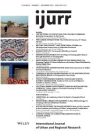This article investigates the dynamics of commuting patterns using the 2005 American Community Survey for Orange, Los Angeles and Ventura Counties in Southern California. Using various analytical approaches, the article illustrates that spatial/temporal patterns of employment should be utilized to develop a better understanding of the spatial dynamics of commuting patterns. The results suggest that (1) counter to popular belief, not all residents of suburban locations suffer from long commutes, (2) polycentric urban employment patterns may provide a better explanation of commuting patterns, and (3) the commuting pattern of low‐income populations may be the most challenging issue to resolve, given the decentralized nature of service employment. Overall, the article suggests that advocacy for any particular urban form may be premature and less than efficient if we do not take into account the reality of commuting patterns as they relate to our fragmented and decentered metropolitan areas.
Details
Written by:
ALI MODARRES
Digital Object Identifier (DOI)
10.1111/j.1468-2427.2010.00994.x
About DOI
Read full article as PDF
Read full article as HTML
See the references for this article
